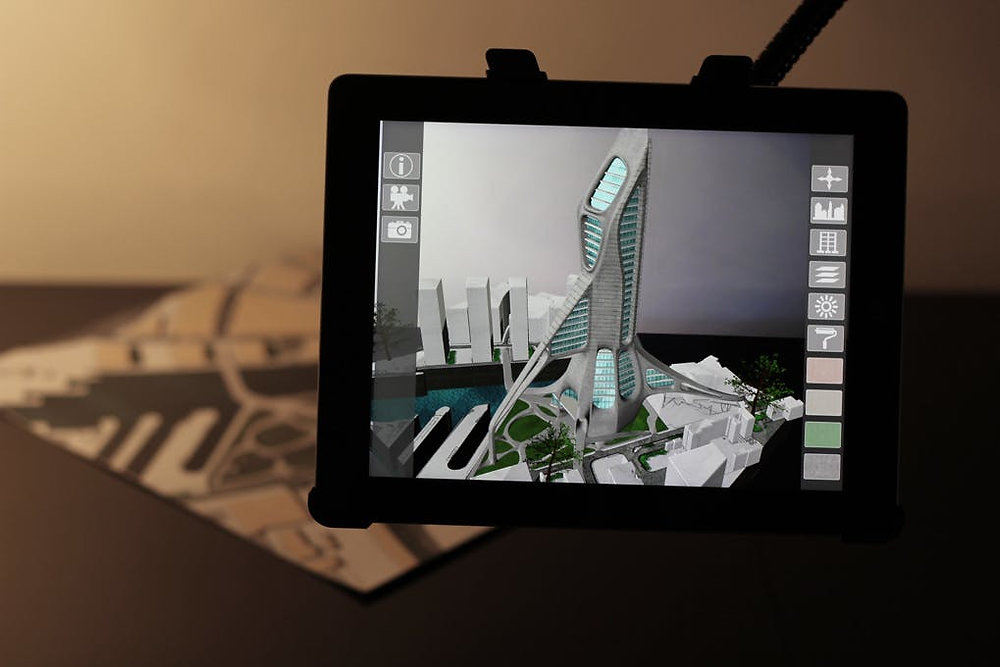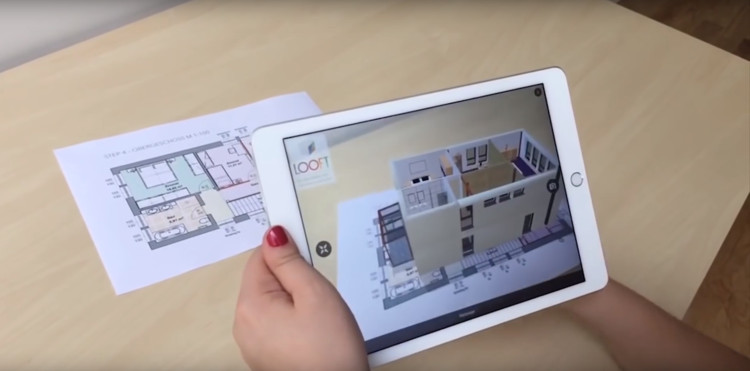Augmented reality (AR) revolutionizes architecture by providing unprecedented visualization and interaction with designs. This advanced technology is now used by architects to make their plans come alive. AR alters the way professionals create, show, and revise architectural blueprints. It brings reality near fantasy, making it possible for stakeholders to perceive spaces before they are constructed.
This robust tool improves cooperation, eases decision-making, and minimizes construction mistakes that are expensive. Augmented reality for architecture is not just a fad; it is integral to contemporary design processes. We shall explore how AR is redefining the architectural industry and the various ways in which it has been applied.
What is Augmented Reality for Architecture?
Augmented Reality for architecture merges digital information with physical reality in architectural visualization. It enhances traditional methods of architectural visualization by mapping computer-generated images onto real-world environments. Architects can use AR to interact with 3D models and bring them to life in ways that are impossible through two-dimensional drawings or static three-dimensional models.
Virtual buildings placed into actual locations are how users can experience augmented-reality-powered architectural visualization walk-throughs. Virtual buildings placed into actual locations are how users can experience an augmented-reality-powered architectural visualization walk-through.
Architectural visualization enables designers, clients, and stakeholders to interact with each other in a much better way, giving room for well-informed decision-making. Augmented reality is disrupting the way architects plan, design, and visualize buildings with fewer errors in their true environment, making for more authentic structures.
Applications of Augmented Reality in the Real Estate Industry:
Augmented Reality (AR)-specific tools Innovations are applying to the real estate industry that changes how buying, selling, and management happens in new ways. It is changing the marketing, viewing, and upkeep of homes.

- Virtual property tours: This feature allows viewers to watch properties in a better manner while sitting far away if buyers cannot visit the premises personally.
- Virtual furniture: For example, agents can place virtual couches and televisions in an empty room to help clients imagine the house as a home. And the procedure can be altered as needed subjectively, with very little cost.
- Pre-construction visualization: Buyers preview AR images of identical structures erected on their empty lots, helping to pre-sell units as well as collect feedback before constructing them.
- Repair defect liability: They ensure that the major repairs and maintenance history of your property is correctly identified and have some guidelines on how they can solve a problem easily.
- Marketing materials: Brochures, listings, etc. spring to life with vibrant 3D models and virtual tours that are more compelling than any of your competitor products.
How Does Augmented Reality for Architecture Work?
From a technical perspective, the integration of augmented reality into architecture is a groundbreaking method of visualization and interaction with the built environment. Essentially, this technology combines virtual models with actual environments, which allows developers and clients to view their projects long before they are started on the ground. This is how augmented reality in architecture works.
1. A Design Sketch of an Architectural Project
At the beginning, a virtual, three-dimensional model of the architectural task is created. To come up with accurate designs, architects exploit advanced tools such as Revit, AutoCAD, and SketchUp, among others. These programs allow for exact modifications that can be made to the structure being modeled. The geometrical information and design components must all be included in the digital model, as that is where AR will eventually emanate from.

2. Incorporation of AR Software
The AR platform applied here could be Unity or Apple’s ARKit, through which the three-dimensional model gets imported. What these platforms allow for is that one can incorporate augmented reality features into their digital models. At this point, however, programmers determine how exactly this object would interact with the real world via AR, i.e., by setting up markers or using GPS data to accurately place this digital model within the physical environment.
Application Development
After the integration of the model, a custom AR application is made. One can use this application on smartphones, tablets, or AR glasses like Microsoft HoloLens. The app includes user-friendly interfaces and interactive features to enable users to manipulate the model, view it from different angles, and explore its details. Also part of it are navigation tools that take you through virtual space just as if you were there in person.
Real World Implementation
At this stage, the actual site is approached with the AR application. Users can target their devices at specific markers or locations to activate augmented reality overlays. With the physical world behind it, the AR model emerges. This allows architects, clients, and builders to see what a project would look like in its intended environment, thereby providing a clear and immersive understanding of design. It also helps highlight areas of concern for making well-informed decisions even before construction begins.
Conclusion:
Augmented reality is transforming architecture through improved visualization and decreasing expensive mistakes. AR brings together computer-generated designs with the real world to enable stakeholders to get a feel for what they are investing in before it is constructed. This guarantees more accurate and better-informed decisions.
For people in Dubai wanting to apply this technology, Limina Studios has the best-quality, top-of-the-range AR services suitable for the architectural field. They come up with new ways to make your designs live. So contact us and get your augmented reality project done in the architecture industry.























